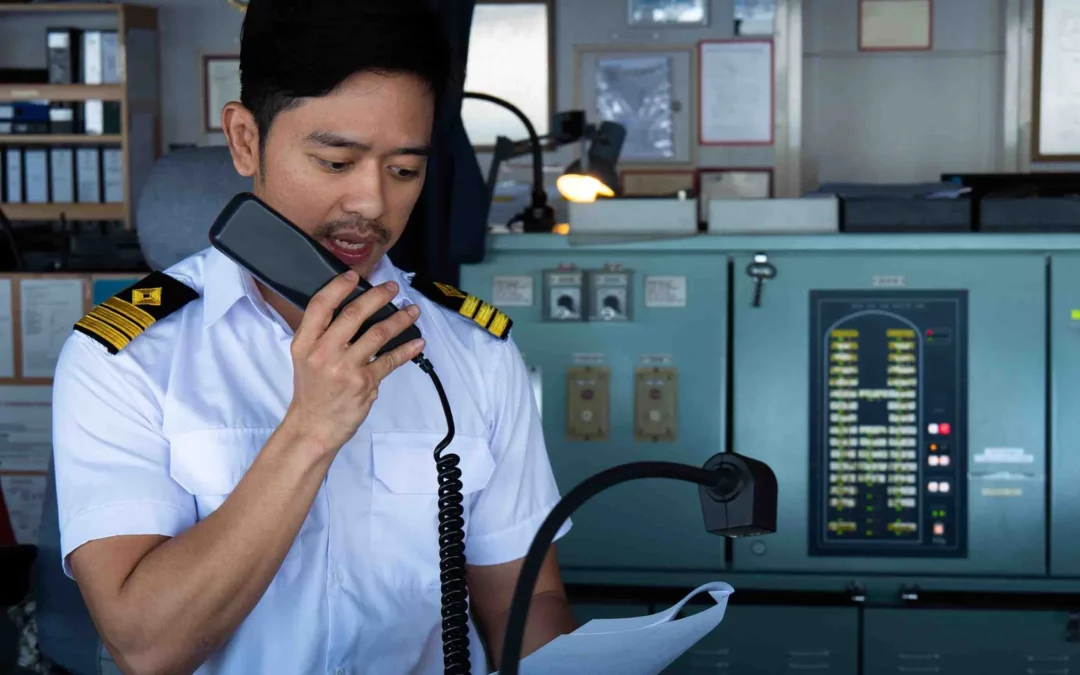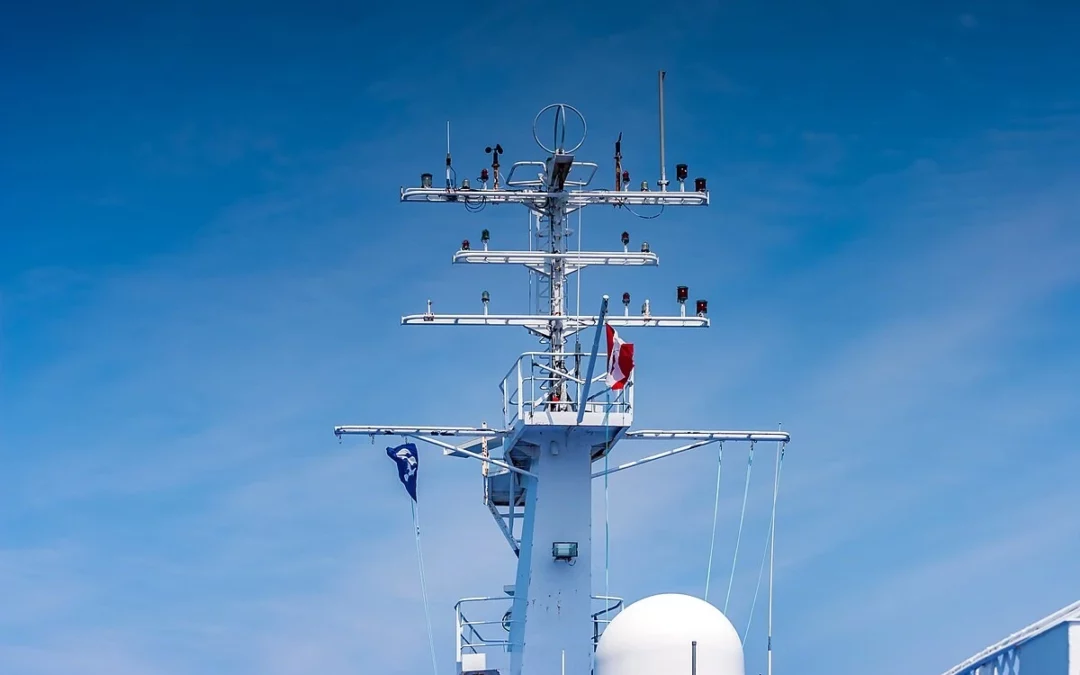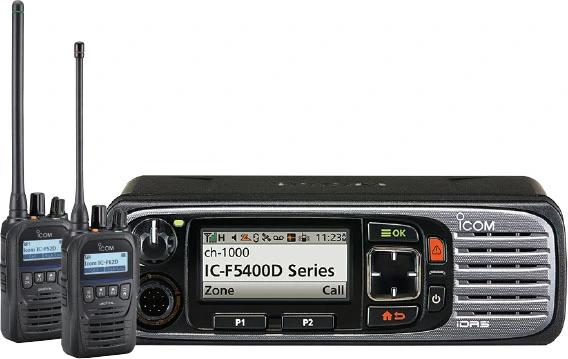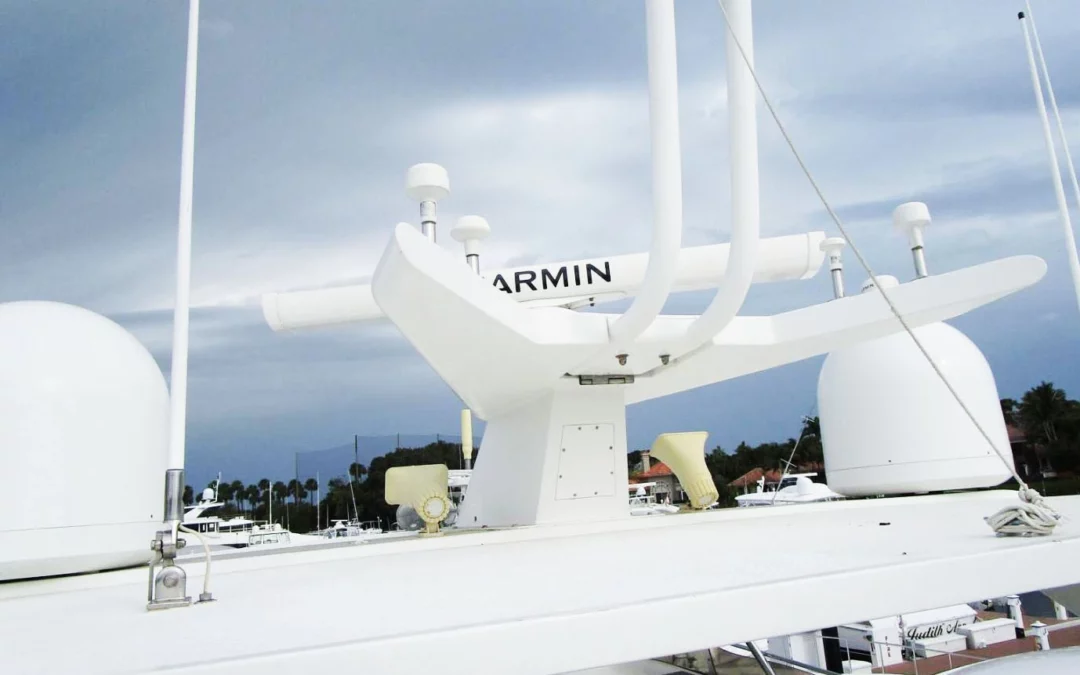
by Barani Chettiar | Apr 19, 2024 | Uncategorized
What is GMDSS?
In the vast and unpredictable expanse of the open seas, ensuring communication and safety at all times is a paramount concern for maritime operations. The Global Maritime Distress and Safety System (GMDSS) stands as a beacon of technological innovation and coordination designed to address these concerns. In this article, we will delve into the origins, components, functions, and global significance of GMDSS in enhancing maritime safety.
History of GMDSS Implementation
The need for a comprehensive maritime communication and distress system became evident in the aftermath of several maritime disasters. The International Maritime Organization (IMO) recognized the necessity for a standardized and efficient system, leading to the development and implementation of GMDSS. The concept gained traction in the 1970s and officially became operational on February 1, 1992, marking a significant milestone in maritime safety.
Components of GMDSS
GMDSS integrates various communication technologies and components to create a robust and interconnected system:
- INMARSAT Satellites: GMDSS relies on INMARSAT satellites to provide global coverage for communication, including distress alerts and safety-related information.
- High-Frequency (HF) Radios: HF radios enable long-range communication and are crucial for vessels operating in areas with limited VHF coverage.
- Very High-Frequency (VHF) Radios: VHF radios serve as the primary communication tool in coastal and near-shore regions.
- Emergency Position Indicating Radio Beacons (EPIRBs): EPIRBs automatically transmit distress signals, including vessel identification and location, in case of an emergency.
- Search and Rescue Transponders (SARTs): SARTs assist in locating vessels in distress by responding to radar signals, enhancing visibility during search and rescue operations.
- NAVTEX (Navigational Telex): NAVTEX provides vessels with navigational and meteorological warnings, ensuring timely access to critical information.
Functions and Benefits of GMDSS
The primary functions of GMDSS are to:
- Provide Distress Alerts: GMDSS facilitates the rapid and automated transmission of distress alerts, ensuring immediate response to emergencies.
- Disseminate Safety Information: The system delivers navigational and meteorological warnings, helping vessels navigate safely through changing conditions.
- Facilitate Search and Rescue Operations: GMDSS enhances the efficiency of search and rescue operations by providing accurate and timely information about distress situations.
The benefits of GMDSS are far-reaching, encompassing improved communication, enhanced safety, and increased chances of survival in emergency situations.
Importance in Maritime Safety
GMDSS plays a pivotal role in enhancing maritime safety through:
- Rapid Distress Response: The automated nature of distress alerts ensures that response efforts are initiated swiftly, minimizing the impact of emergencies.
- Global Coverage: GMDSS utilizes a network of satellites to provide coverage across the entire globe, ensuring that vessels are not isolated in distress situations.
- Interconnected Communication: The integration of various communication technologies ensures that vessels can communicate seamlessly, both with each other and with onshore authorities.
- Timely Information: GMDSS delivers timely and relevant information, including navigational warnings and weather updates, enabling vessels to make informed decisions and avoid potential hazards.
Global Coverage and Regulations
GMDSS operates on a global scale, covering all seas and oceans. The system is regulated by the International Maritime Organization (IMO), ensuring uniform standards and compliance across the maritime industry. Vessels of certain sizes and classes are required to be equipped with GMDSS-compliant communication systems, emphasizing the universal commitment to maritime safety.
The Critical Role of GMDSS
In conclusion, GMDSS stands as a testament to the maritime industry’s dedication to safety and communication. Its evolution from a concept to a globally implemented system reflects a collective commitment to minimizing the risks and maximizing the safety of seafarers. The components, functions, and benefits of GMDSS underscore its critical role in maritime safety, ensuring that vessels can communicate, respond, and navigate effectively in the ever-changing and sometimes perilous conditions of the open seas. As technology continues to advance, GMDSS remains a cornerstone of maritime safety, embodying the shared responsibility to protect and support those who venture into the vastness of the world’s oceans.

by Barani Chettiar | Apr 18, 2024 | Uncategorized
Importance of a Reliable Marine Radio Antenna
In the expansive world of maritime communication, a reliable marine radio antenna is not just an accessory; it’s a lifeline. As vessels navigate the open seas, the effectiveness of communication is often determined by the quality and suitability of the antenna. Choosing the right marine radio antenna is, therefore, a critical decision that directly impacts the safety, efficiency, and overall performance of a vessel.
Understanding the Different Types of Antennas
Marine radio antennas come in various types, each designed to cater to specific needs and conditions at sea. The two primary categories are VHF antennas and SSB antennas. Very High-Frequency (VHF) antennas are common for short-range communication, while Single Sideband (SSB) antennas are ideal for long-range transmissions. Understanding the differences in these antennas is essential for selecting the one that aligns with the communication requirements of the vessel.
Factors to Consider When Choosing an Antenna
Several factors should guide the selection of a marine radio antenna:
- Frequency Range: Ensure that the antenna’s frequency range matches that of your marine radio.
- Antenna Gain: Consider the antenna’s gain, which determines its ability to transmit and receive signals efficiently.
- Antenna Length: Longer antennas generally provide better performance, especially for VHF communication.
- Mounting Options: Choose an antenna with a mounting style that suits your vessel – options include mast-mounted, deck-mounted, and rail-mounted antennas.
- Material and Build Quality: Opt for antennas constructed from durable and corrosion-resistant materials to withstand the harsh marine environment.
Installation Tips for Optimal Performance
Installing a marine radio antenna requires careful consideration to ensure optimal performance:
- Antenna Height: Mount the antenna as high as possible to reduce signal obstructions and improve line-of-sight communication.
- Proper Grounding: Ensure a proper grounding system to dissipate static electricity and protect the vessel’s electronics.
- Cable Quality: Use high-quality coaxial cables with minimal signal loss for efficient transmission.
Maintenance and Care for Longevity
To maximize the lifespan and effectiveness of a marine radio antenna, regular maintenance is crucial. Perform the following tasks:
- Visual Inspections: Regularly inspect the antenna for any signs of wear, corrosion, or damage.
- Cleaning: Keep the antenna clean from salt deposits, bird droppings, and other debris.
- Tightening Connections: Periodically check and tighten all connections to maintain signal integrity.
Popular Marine Radio Antenna Brands
Several reputable brands are known for producing high-quality marine radio antennas:
- Shakespeare Marine Antennas: Renowned for their durable and high-performance antennas, Shakespeare offers a wide range of options for different marine communication needs.
- Digital Antenna: Known for their innovative designs and reliable products, Digital Antenna produces marine antennas with a focus on durability and signal clarity.
- Comrod: Specializing in VHF and SSB antennas, Comrod is recognized for delivering robust and efficient marine communication solutions.
Choose Wisely for Seamless Communication at Sea
Selecting the right marine radio antenna is a decision that impacts the safety and efficiency of maritime communication. By understanding the different types of antennas, considering key factors during the selection process, and following proper installation and maintenance practices, vessel operators can ensure seamless communication at sea. Reputable brands like Shakespeare Marine Antennas, Digital Antenna, and Comrod offer a variety of options to cater to diverse marine communication needs. As vessels embark on their journeys across the open waters, a wisely chosen marine radio antenna becomes not just a tool, but a dependable companion for reliable and effective communication.

by Barani Chettiar | Apr 17, 2024 | Uncategorized
Importance of Marine Radios at Sea
The vastness of the open sea presents challenges and uncertainties that demand effective communication tools to ensure the safety of maritime operations. Among these tools, marine radios stand out as indispensable lifelines that play a crucial role in emergencies. In this article, we explore the pivotal role of marine radios in addressing emergency situations at sea and the vital functions they serve in safeguarding lives and vessels.
Functionality of Marine Radios for Communication
Marine radios serve as the primary means of communication for vessels at sea. Their functionality extends beyond conventional two-way radios, offering the capability to transmit and receive vital information across specified maritime frequencies. These radios are specially designed to withstand the harsh marine environment, ensuring reliable communication even in challenging conditions such as adverse weather, heavy seas, or low visibility.
Emergency Protocols and Procedures for Using Radios
In emergency situations, standardized protocols and procedures are crucial for effective communication. The International Maritime Organization (IMO) has established guidelines for maritime emergency communication, emphasizing the use of marine radios to relay distress signals. Crew members are trained to follow these protocols, which include the use of specific frequencies for distress calls, the internationally recognized distress signal “Mayday,” and other standardized communication practices.
Role of Marine Radios in Distress Calls
The ability to broadcast distress calls is one of the paramount functions of marine radios. Distress calls, typically initiated with the urgency-filled word “Mayday,” convey critical information about the nature of the emergency, the vessel’s position, and the number of people on board. The marine radio’s reach and reliability in distress situations make it an essential tool for quickly alerting nearby vessels, maritime authorities, and search and rescue teams to the urgent need for assistance.
Advantages of Using Marine Radios Over Other Methods
While modern technology offers various communication methods, marine radios remain unmatched in certain aspects, particularly in emergency situations. Unlike mobile phones, marine radios don’t rely on cellular networks, ensuring communication continuity even in remote areas or during network failures. Additionally, marine radios operate on dedicated maritime frequencies, allowing for clear and direct communication without the potential congestion often experienced on other communication channels.
Case Studies of Successful Radio Communications at Sea
Numerous real-life scenarios highlight the critical role of marine radios in emergency situations. One notable case involved a vessel experiencing engine failure in rough seas. The distressed captain utilized the marine radio to transmit a Mayday call, prompting a nearby ship to respond and provide assistance. The effective communication facilitated a successful tow operation, preventing the vessel from drifting into more perilous waters.
Another case involved a medical emergency on board a yacht far from the coastline. The crew utilized the marine radio to establish contact with maritime authorities, enabling them to coordinate a timely medical evacuation. The radio’s reliability and immediate accessibility played a decisive role in the successful resolution of the emergency.
Marine Radios Vital for Safety at Sea
In the dynamic and often unpredictable maritime environment, the role of marine radios in emergency situations cannot be overstated. Their functionality, standardized protocols, and ability to transmit distress calls make them invaluable tools for ensuring the safety of vessels and their crews. The advantages of using marine radios over other communication methods, coupled with real-life case studies demonstrating their effectiveness, underscore their vital role in safeguarding lives and maintaining the resilience of maritime operations. As technology continues to advance, marine radios remain a cornerstone of safety at sea, serving as the reliable bridge that connects vessels with assistance when it is needed most.

by Barani Chettiar | Apr 16, 2024 | Uncategorized
Definition of Digital Marine Radios
In an era where technology continuously shapes and refines communication systems, digital marine radios have emerged as a transformative force for commercial applications. Unlike their analog counterparts, digital marine radios convert voice signals into binary code, offering a myriad of advantages that redefine communication at sea. In this article, we will explore the distinctive benefits that make digital marine radios the go-to choice for commercial vessels.
Improved Communication Clarity
One of the most significant advantages of digital marine radios is the unparalleled clarity they provide in communication. Digital transmission eliminates background noise and interference, ensuring that messages are heard with exceptional clarity. This enhancement is particularly crucial in the dynamic and often challenging maritime environment, where ambient noise and varying weather conditions can impede effective communication. The clarity offered by digital marine radios translates into better understanding and more precise coordination, ultimately improving operational efficiency on commercial vessels.
Enhanced Security Features
Digital marine radios come equipped with advanced security features that go beyond the capabilities of analog systems. Digital encryption ensures that communications remain confidential and secure, reducing the risk of unauthorized interception. This added layer of security is vital for commercial applications, where sensitive information regarding cargo, routes, or operational strategies needs protection from potential threats. The encryption capabilities of digital marine radios contribute to a safer and more secure communication environment for commercial vessels.
Increased Range and Coverage
Digital marine radios boast superior range and coverage compared to their analog counterparts. The digital signal’s resilience to degradation over distance allows for reliable communication over more extensive areas. This expanded coverage is particularly advantageous for commercial vessels navigating vast open waters or operating in remote regions. The increased range ensures that communication remains consistent, fostering a safer and more connected maritime ecosystem.
Interoperability with Other Systems
Digital marine radios are designed with interoperability in mind, facilitating seamless communication with other digital systems and technologies. This capability enables integration with navigation equipment, radar systems, and other onboard technologies, creating a comprehensive and interconnected maritime communication network. The ability to interface with various systems enhances the overall efficiency of commercial vessel operations, allowing for more streamlined and coordinated efforts.
Real-time Data Transmission Capabilities
Digital marine radios offer real-time data transmission capabilities, enabling the exchange of critical information beyond voice communication. Text messaging, data files, and even GPS coordinates can be transmitted digitally, providing a more comprehensive means of sharing essential data. This feature is invaluable for commercial applications, where timely information exchange can impact decision-making processes, route planning, and response to changing conditions.
Remote Monitoring and Control Options
Digital marine radios often come with remote monitoring and control options, allowing operators to manage and monitor communication systems from a centralized location. This capability streamlines the oversight of multiple vessels within a fleet, enhancing operational control and responsiveness. Remote monitoring ensures that communication systems are functioning optimally and allows for swift intervention in the event of any issues, contributing to a more efficient and well-managed commercial maritime operation.
Digital Marine Radios Offer Numerous Benefits for Commercial Applications
In conclusion, the adoption of digital marine radios marks a significant advancement in communication technology for commercial applications. The improved communication clarity, enhanced security features, increased range and coverage, interoperability with other systems, real-time data transmission capabilities, and remote monitoring options collectively position digital marine radios as a superior choice for modern commercial vessels. Embracing the advantages of digital communication not only elevates operational efficiency but also enhances the safety and security of commercial maritime activities. As technology continues to evolve, digital marine radios stand as a beacon of innovation in the ever-changing seascape of maritime communication.

by Barani Chettiar | Apr 15, 2024 | Uncategorized
Importance of Radio Communication on Ships
In the vast expanse of the open sea, where swift communication can be a matter of safety and operational efficiency, the reliability of radio communication on commercial vessels is paramount. In this article, we’ll explore essential tips for optimizing radio range and signal strength, ensuring seamless and effective communication for commercial vessels navigating the unpredictable waters.
Understanding Radio Frequency Basics
To optimize radio range and signal strength, it’s crucial to comprehend the basics of radio frequency (RF). Different frequencies behave differently in maritime environments, affected by factors such as weather conditions and the surrounding topography. Familiarize yourself with the frequency bands allocated for maritime communication and understand how they may be influenced by atmospheric conditions. This foundational knowledge forms the basis for implementing effective strategies to enhance radio communication.
Choosing the Right Antenna Placement
The placement of your antennas plays a pivotal role in maximizing radio range and signal strength. Ensure that antennas are mounted as high as possible and free from obstructions. Elevated antennas have a clearer line of sight, minimizing potential obstacles that could impede signal transmission. Additionally, antennas should be positioned away from other electronic equipment and metallic structures to prevent interference. Strategic antenna placement is a fundamental step in optimizing communication capabilities on commercial vessels.
Minimizing Signal Interference
Signal interference can significantly impact radio communication on ships. Identify and minimize sources of interference, such as electronic devices, onboard machinery, or nearby vessels transmitting on the same frequency. Insulate wiring to reduce electromagnetic interference, and regularly inspect and maintain equipment to prevent malfunctions that could contribute to signal degradation. By actively minimizing interference sources, you enhance the clarity and reliability of your radio communications.
Proper Maintenance of Radio Equipment
Regular maintenance is the cornerstone of optimal radio performance. Conduct routine inspections to check for loose connections, damaged cables, or corrosion on antennas. Ensure that all components are securely fastened and functioning correctly. Clean and inspect the radio equipment for any signs of wear or water damage. Consistent maintenance not only prevents unexpected failures but also contributes to the longevity and reliability of your communication systems.
Utilizing Signal Boosters and Repeaters
In areas where radio signals may struggle to reach, consider implementing signal boosters or repeaters. Signal boosters amplify weak signals, extending the effective range of your communication. Repeaters receive and retransmit signals, bridging gaps in coverage. While these devices can be valuable in enhancing communication capabilities, it’s essential to choose reputable and marine-grade equipment to ensure durability and reliability in challenging maritime conditions.
Conducting Regular Range Testing
Regular range testing is a proactive approach to assess and optimize radio performance. Conduct tests in various weather conditions and geographic locations to evaluate the reach and clarity of your signals. This practice not only helps identify potential issues but also allows you to adjust settings or upgrade equipment based on real-world performance. Incorporate range testing into your routine maintenance schedule to continuously optimize radio range and signal strength.
Ensuring Reliable Communication at Sea
In the dynamic and ever-changing environment of the open sea, reliable communication is the bedrock of maritime safety and efficiency. By understanding radio frequency basics, choosing optimal antenna placement, minimizing interference, conducting proper maintenance, utilizing signal boosters, and regularly testing radio range, commercial vessels can enhance their communication capabilities. These proactive measures not only contribute to the safety of the crew and the vessel but also ensure that communication remains robust in the face of the unpredictable challenges posed by the open waters. Prioritizing these tips will undoubtedly optimize radio range and signal strength, fostering effective communication for commercial vessels on every journey.





